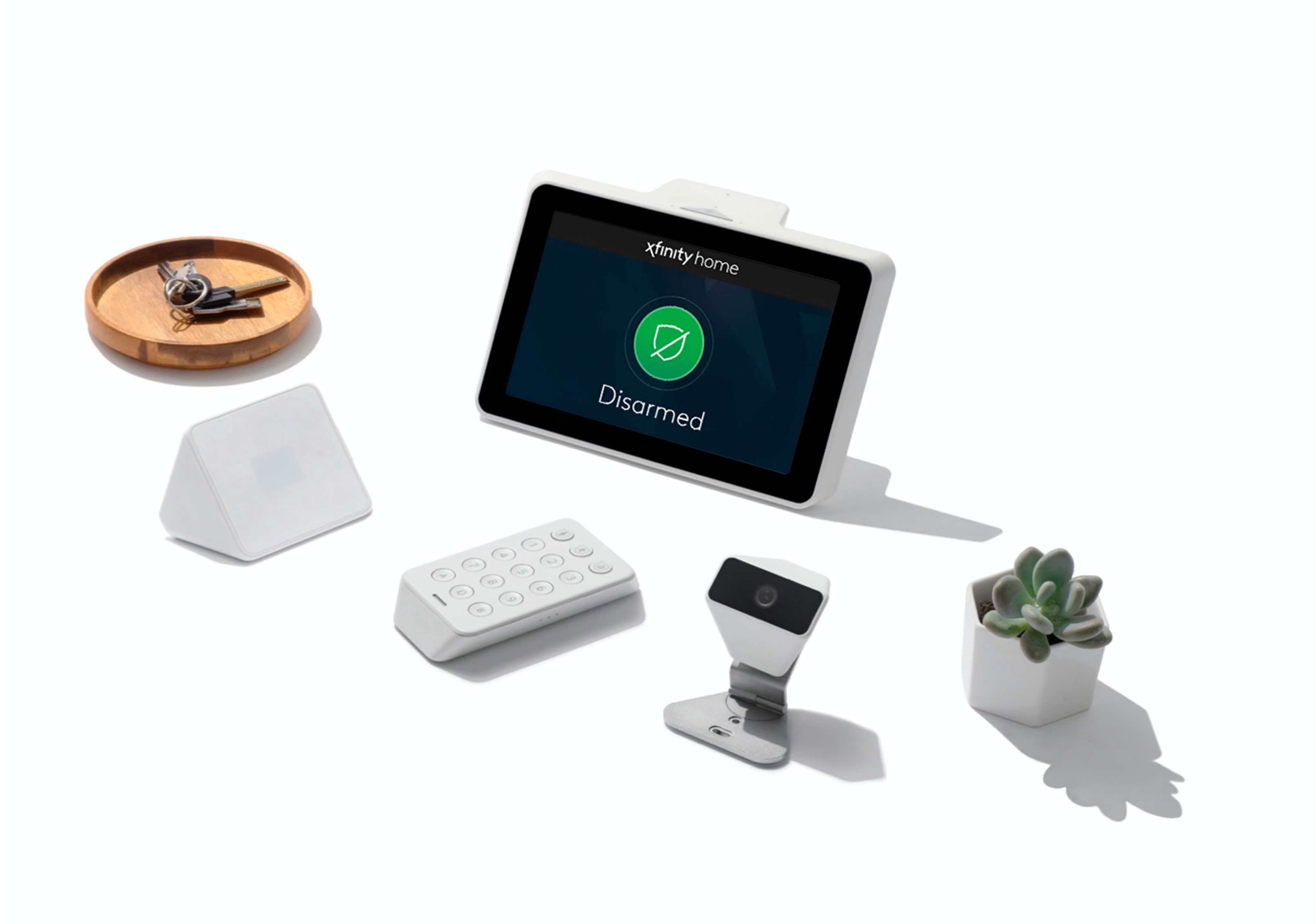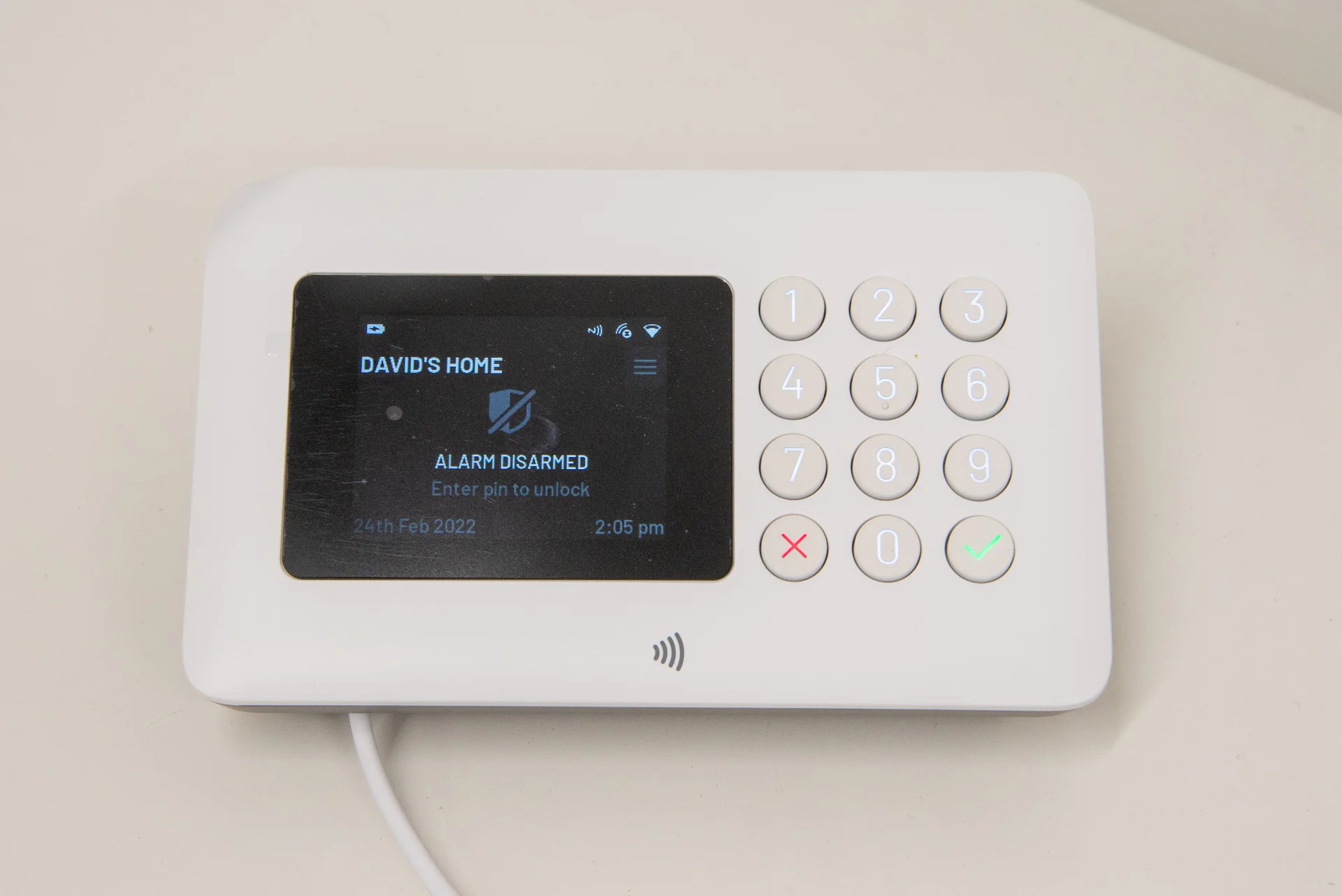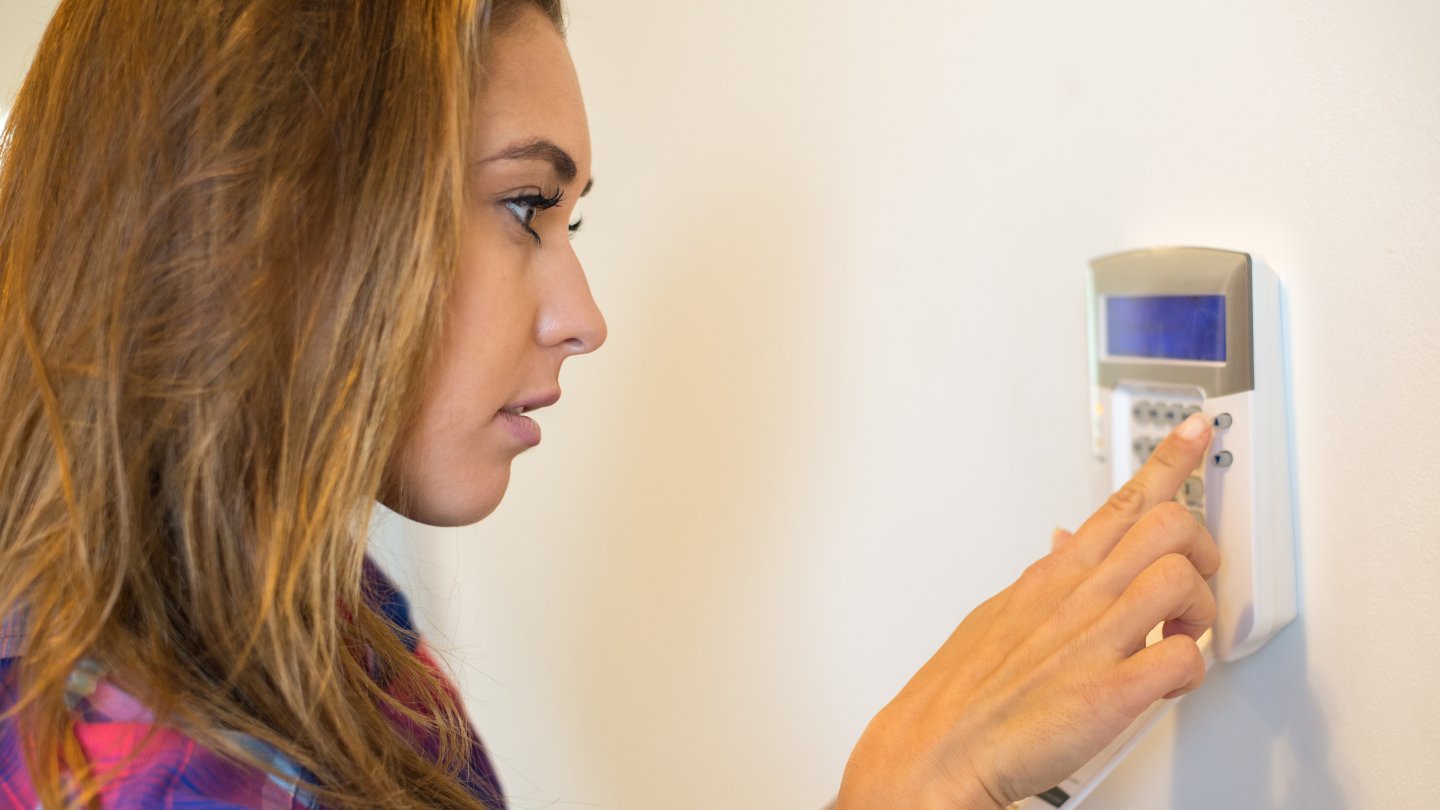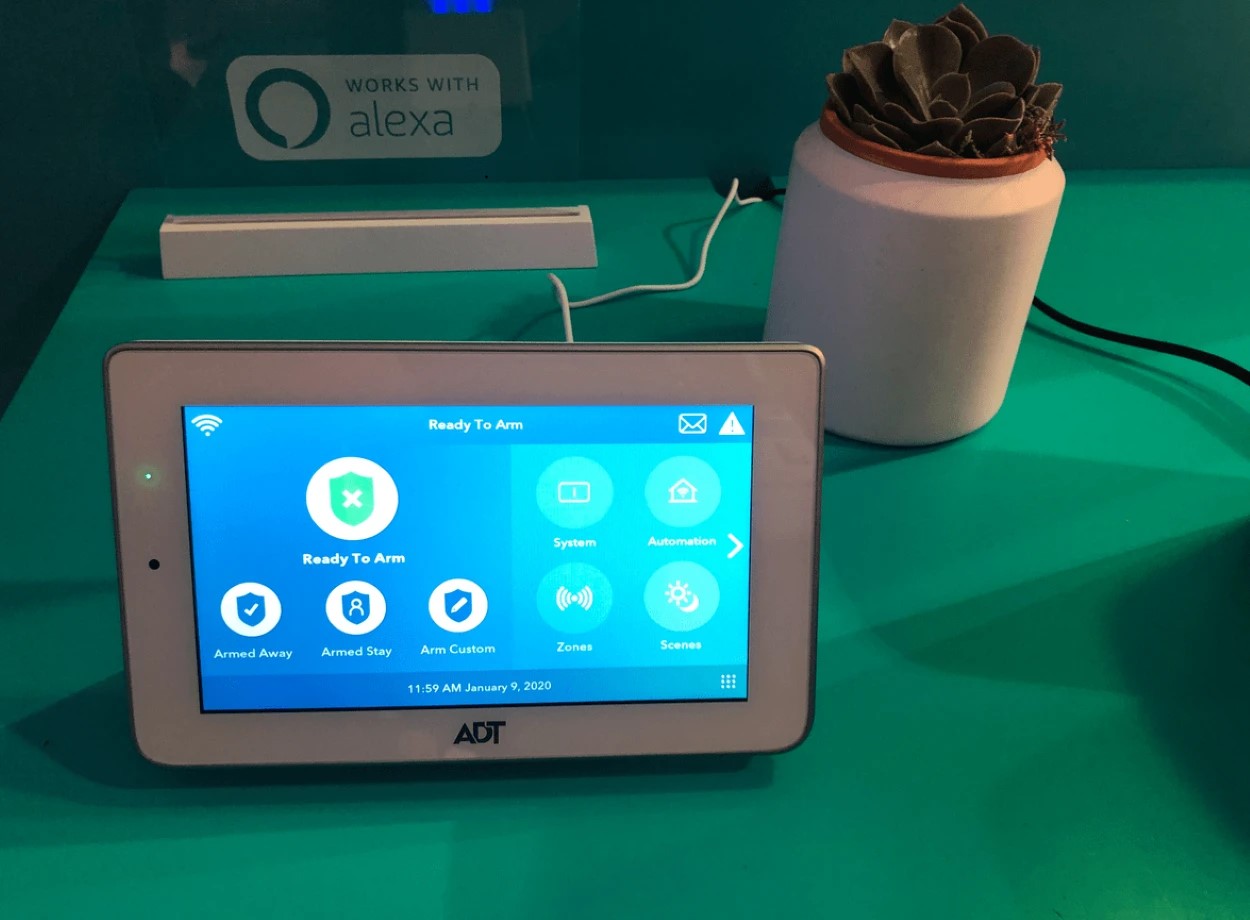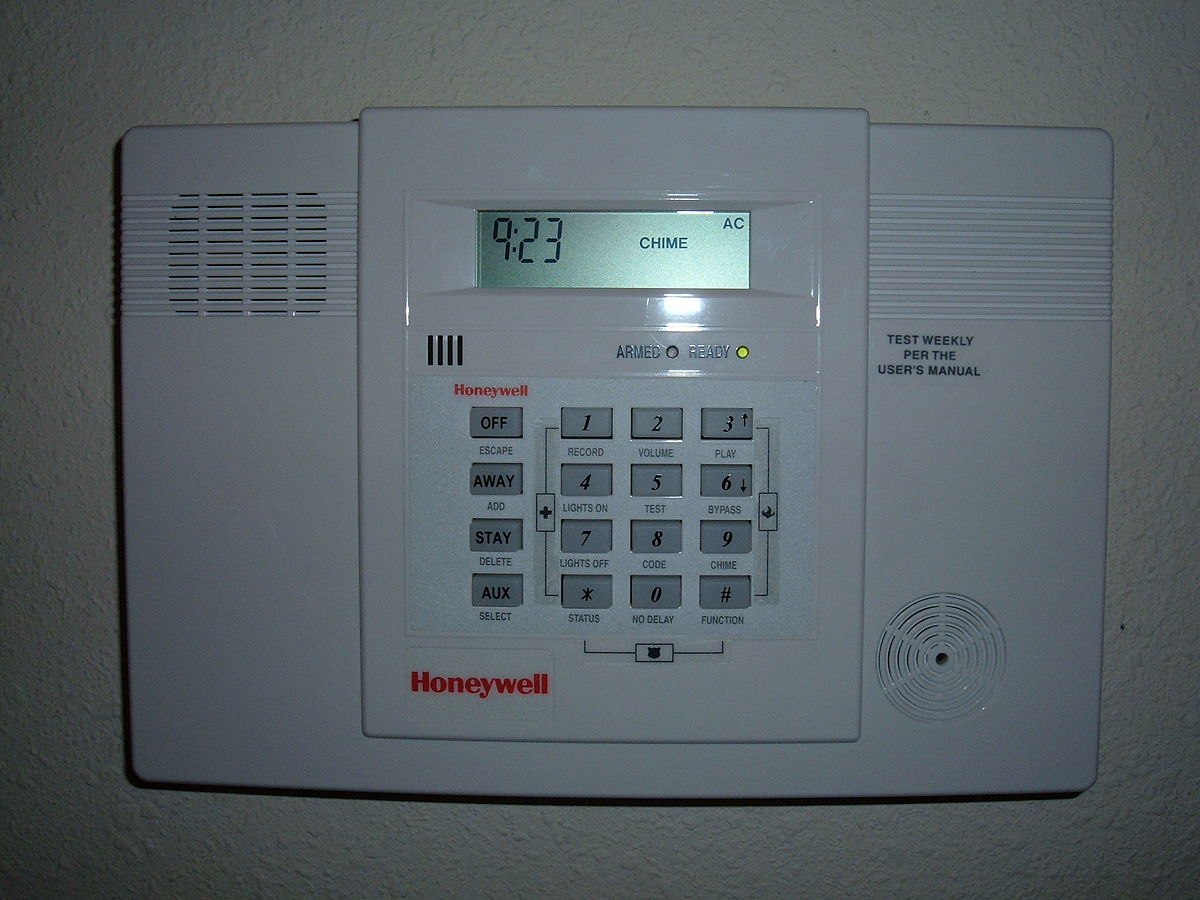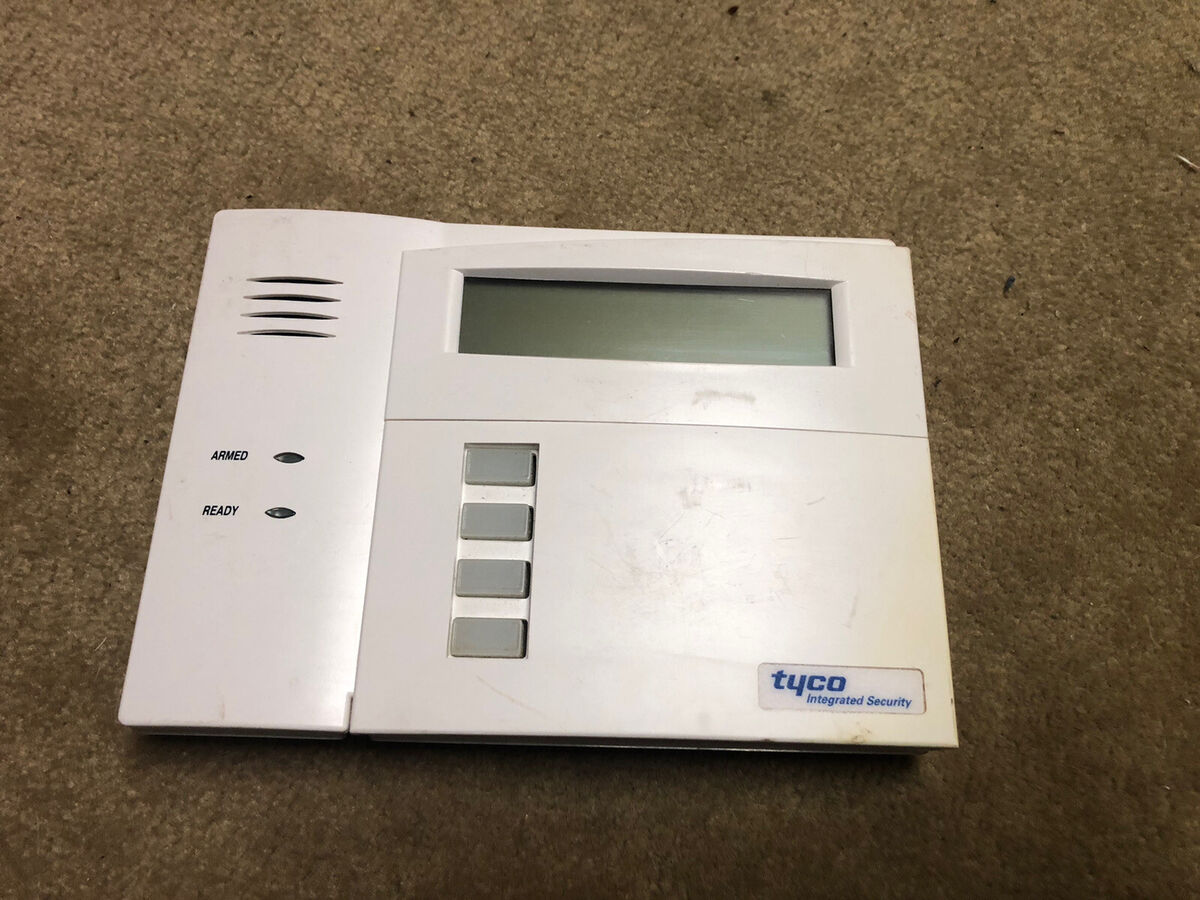Home>Home Security and Surveillance>What Is Zoning Pertaining To Alarm Systems
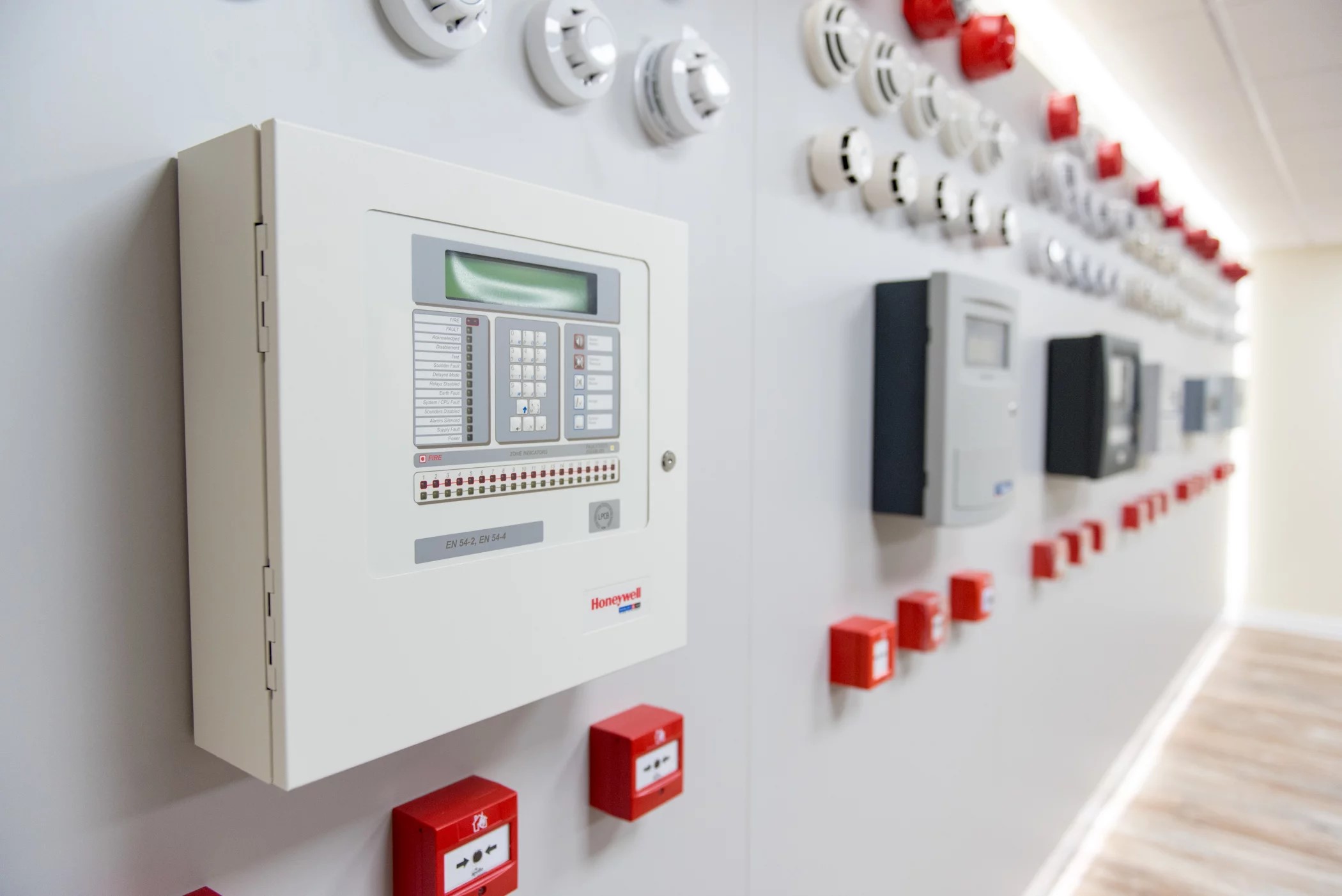

Home Security and Surveillance
What Is Zoning Pertaining To Alarm Systems
Modified: March 6, 2024
Learn about zoning in home security and surveillance systems, including how it pertains to alarm systems and enhances protection for your property.
(Many of the links in this article redirect to a specific reviewed product. Your purchase of these products through affiliate links helps to generate commission for Storables.com, at no extra cost. Learn more)
Introduction
Welcome to the world of home security and surveillance! In an era where safety and peace of mind are paramount, it’s crucial to establish robust security measures to protect what matters most – our homes and loved ones. One fundamental aspect of home security systems is zoning, which plays a vital role in ensuring optimal security coverage and response.
When we think of zoning, we often associate it with city planning or real estate. However, in the realm of alarm systems, zoning takes on a different meaning. Zoning pertains to the division or segmentation of a property into specific areas or zones, each with its own unique security configuration and monitoring capabilities. This technique allows for a more targeted and efficient approach to securing different parts of a property.
With the advancements in technology and the availability of sophisticated alarm systems, zoning has become an integral part of modern home security setups. In this article, we will delve into the concept of zoning in alarm systems, explore its purpose and different types, and discuss its importance in creating a robust security infrastructure for your home.
So, whether you’re a homeowner looking to enhance your security setup or a security professional interested in expanding your knowledge, let’s dive into the world of zoning in alarm systems and unleash the power of targeted protection.
Key Takeaways:
- Zoning in alarm systems divides a property into different areas, allowing customized security measures for each zone. This ensures targeted protection, quick response, and minimizes false alarms.
- Implementing zoning requires careful planning, quality sensors, and regular maintenance. It offers personalized security, targeted surveillance, and flexibility in managing the security system.
Read more: What Alarm Systems Use Alexa
Definition of Zoning
Zoning in the context of alarm systems refers to the process of dividing a property into distinct areas or zones, each treated as an individual security entity. These zones are typically defined based on the layout and characteristics of the property, such as rooms, entrances, windows, or outdoor spaces. By creating zones, homeowners can customize their security system to provide tailored protection for each area.
Each zone is equipped with its own set of sensors, detectors, and surveillance devices, enabling independent monitoring and control. For instance, you can designate the front door as one zone, the living room as another, and the backyard as a separate zone. This zoning approach enhances the precision and efficacy of alarm systems by allowing targeted surveillance and quick response in case of unauthorized entry or suspicious activity.
The implementation of zoning can vary depending on the specific alarm system and security needs. Some systems allow for simple zoning configurations with basic sensors and detectors, while others offer more advanced zoning capabilities, including the use of motion sensors, perimeter sensors, and video surveillance.
Additionally, alarm systems that incorporate zoning features often provide homeowners with the ability to arm or disarm specific zones independently. This flexibility allows for convenient control and customization of the security system based on day-to-day activities or specific security requirements.
In summary, zoning in alarm systems involves dividing a property into distinct areas or zones, each equipped with its own set of security devices. This approach allows for personalized security coverage based on the unique layout and characteristics of the property, enhancing the overall effectiveness of the alarm system.
Purpose of Zoning in Alarm Systems
The primary purpose of zoning in alarm systems is to provide enhanced security coverage and response by customizing the protection for different areas or zones within a property. By dividing the property into zones, homeowners can optimize their security system to cater to specific security needs, improve monitoring capabilities, and minimize false alarms.
One of the key benefits of zoning is the ability to prioritize and allocate resources based on the level of importance or vulnerability of each zone. For example, areas with high-value assets or rooms where valuable items are stored can be assigned a higher level of security, ensuring they receive extra protection and monitoring.
Zoning also allows for a more targeted and precise response in case of an alarm activation. Instead of treating the entire property as a single zone, security personnel or homeowners can quickly identify the specific zone where the alarm has been triggered. This enables a faster response time, as emergency services can be directed to the affected zone without wasting time and resources searching the entire property.
Moreover, zoning helps minimize false alarms by providing more accurate detection and monitoring. By customizing the sensitivity levels and response criteria for each zone, alarm systems can differentiate between genuine threats and environmental factors that may trigger false alarms, such as pets, moving objects, or harsh weather conditions. This ensures that authorities are only alerted when a legitimate security breach occurs, reducing unnecessary responses and potential fines for false alarms.
Another purpose of zoning in alarm systems is to allow for different security configurations based on the activities or occupancy of specific zones. For instance, homeowners may want stricter security measures in place for unoccupied areas, such as basements or guest rooms, while having more relaxed settings for frequently occupied spaces like living areas or kitchens. Zoning enables the customization of security settings to adapt to varying security requirements throughout the property.
Ultimately, the purpose of zoning in alarm systems is to provide homeowners with a flexible, customizable, and efficient security solution. By segmenting the property into zones and tailoring the security measures for each zone, homeowners can maximize the effectiveness of their alarm system, ensuring comprehensive coverage and swift response in the event of a security breach.
Importance of Zoning in Alarm Systems
Zoning plays a crucial role in enhancing the effectiveness and reliability of alarm systems. Here are some key reasons why zoning is important in the context of home security:
- Targeted Protection: Zoning allows homeowners to provide focused and tailored protection to different areas or zones within their property. By customizing the security measures for each zone, homeowners can prioritize the security of high-value areas or vulnerable zones, ensuring they receive the necessary attention and monitoring.
- Customizable Security Settings: Zoning provides the flexibility to customize security settings based on specific security requirements. For example, homeowners can adjust the sensitivity levels of sensors within each zone, set different arming preferences, or integrate specific surveillance devices to meet the unique needs of each area. This level of customization ensures that the security system aligns perfectly with the layout and characteristics of the property.
- Precision Response: With zoning, alarm systems can provide a more targeted and precise response in the event of a security breach. By identifying the exact zone where the alarm has been triggered, security personnel or homeowners can take immediate action and direct emergency services to the affected area quickly. This not only saves time but also increases the chances of apprehending intruders or minimizing the extent of potential damage.
- Minimization of False Alarms: False alarms can be inconvenient, time-consuming, and result in unnecessary responses from emergency services. Zoning helps reduce false alarms by allowing for customized sensitivity levels and response criteria for each zone. By fine-tuning the security measures based on the specific characteristics of each area, alarm systems can differentiate between genuine threats and false triggers caused by environmental factors, such as pets or moving objects.
- Optimized Resource Allocation: Zoning allows for optimal allocation of security resources based on the importance and vulnerability of each zone. By designating areas with higher security priorities, such as entry points or rooms with valuable assets, homeowners can ensure that these zones receive the necessary attention and monitoring. This allocation of resources ensures that security efforts are maximized and focused where they are needed the most.
- Enhanced Deterrence: A well-defined zoning strategy in alarm systems can act as a deterrent to potential intruders. Clearly demarcating different zones can give the impression that the property is under comprehensive surveillance and robust security measures. This can discourage criminals from attempting unauthorized entry as they perceive a higher risk of being detected and apprehended.
In summary, zoning is of paramount importance in alarm systems as it provides targeted protection, customizable security settings, precise response, minimization of false alarms, optimized resource allocation, and enhanced deterrence. By leveraging the power of zoning, homeowners can create a comprehensive and reliable security infrastructure to safeguard their property and loved ones.
Types of Zoning in Alarm Systems
There are different types of zoning options available in alarm systems, each offering unique capabilities and benefits. Here are some common types of zoning:
- Physical Zoning: Physical zoning is based on dividing the property into physical areas or zones. This can include rooms, floors, outdoor spaces, or specific areas of interest within a property. Physical zoning allows for customized security measures for each zone, such as installing specific sensors, detectors, or surveillance cameras to provide targeted protection. It is ideal for residential properties with multiple rooms or commercial premises with different areas and departments.
- Perimeter Zoning: Perimeter zoning focuses on securing the external boundaries of the property. This type of zoning involves installing sensors and detectors along the perimeter walls, fences, or entry points to detect any unauthorized access attempts. Perimeter zoning acts as the first line of defense, alerting homeowners or security personnel of potential breaches before intruders gain access to the property. It is especially beneficial for properties with large outdoor areas or high-value assets.
- Interior Zoning: Interior zoning involves dividing the interior spaces of a property into separate zones for enhanced security coverage. This type of zoning can be useful in larger homes or commercial buildings with several rooms or sections. By creating interior zones, homeowners can customize the security measures within each zone, ensuring that different areas of the property receive the appropriate level of protection. Interior zoning helps in swift identification and response to security breaches occurring within specific rooms or areas.
- Time-based Zoning: Time-based zoning allows homeowners to configure different security settings for specific time periods. This zoning option is useful for properties where security requirements vary throughout the day. For example, during nighttime when occupants are typically asleep, homeowners may want to apply stricter security measures to certain zones or activate additional surveillance devices. Time-based zoning ensures that the security system adapts to the changing security needs at different times of the day or night.
- Armed Partition Zoning: Armed partition zoning enables homeowners to arm or disarm specific zones independently. This type of zoning is beneficial for properties that have different occupancy or security needs in various areas. Homeowners can choose to arm high-security zones, such as bedrooms or entry points, while disarming low-security zones like living areas or interior rooms. Armed partition zoning provides flexibility and convenience in managing the security status of different areas within the property.
These are just a few examples of the types of zoning that can be implemented in alarm systems. The choice of zoning options depends on the specific requirements, layout, and characteristics of the property, as well as the preferences of the homeowners.
By considering the different types of zoning and selecting the most suitable options for their property, homeowners can create a comprehensive and tailored security solution to safeguard their homes and provide peace of mind.
When setting up an alarm system, make sure to understand the zoning requirements. Zoning divides the property into different areas for more precise monitoring and response. It’s important to properly configure and label each zone to ensure the system functions effectively.
Read more: What Kind Of Tape Is Used For Alarm Systems
How Zoning Works in Alarm Systems
Zoning in alarm systems involves the division of a property into different zones or areas, each with its own designated security configuration and monitoring capabilities. Here’s a breakdown of how zoning works:
- Zone Identification: The first step in implementing zoning is to identify the different zones within the property. Zones can be defined based on rooms, floors, entrances, windows, or specific areas of interest. The goal is to create distinct areas that require individualized security coverage.
- Sensor Placement: Once the zones are identified, sensors and detectors are strategically placed within each zone. These sensors can vary based on the specific security needs of the zone, such as door/window sensors, motion sensors, glass break sensors, or heat/smoke detectors. The placement of these sensors ensures comprehensive coverage and accurate detection of security breaches within each zone.
- Control Panel Configuration: The control panel of the alarm system is then configured to recognize and monitor the different zones. Each zone is assigned a specific identification code or name within the control panel. This allows for differentiated monitoring of each zone and provides information on the zone where an alarm has been triggered.
- Arming and Disarming: Zoning allows for independent arming and disarming of specific zones. Homeowners can selectively arm or disarm zones based on their security needs or occupancy status. For example, when leaving the house, homeowners may choose to arm high-security zones while keeping low-security zones disarmed for convenience.
- Alerts and Notifications: In the event of a security breach within a specific zone, the alarm system triggers an alert or notification. This can include sounding an audible alarm, flashing lights, and sending alerts to connected devices or a monitoring center. The system also identifies the specific zone where the breach occurred, allowing for a targeted response.
- Emergency Response: Upon receiving an alert or notification, homeowners or security personnel can take appropriate action to address the security breach. This may involve contacting emergency services, assessing the situation through surveillance cameras, or activating additional security measures specific to the affected zone. The ability to pinpoint the zone of the breach enables a faster and more efficient response.
The effectiveness of zoning in alarm systems relies on proper planning, logical segmentation of the property, and thoughtful placement of sensors and detectors. It allows for optimized security coverage, precise response, and customization of security settings for different areas within the property.
Ultimately, zoning takes advantage of modern technology to create intelligent and responsive alarm systems that provide targeted protection, swift response, and enhanced peace of mind for homeowners.
Benefits of Zoning in Alarm Systems
Implementing zoning in alarm systems offers a range of benefits that enhance the overall security and functionality of the system. Here are some key advantages of utilizing zoning:
- Personalized Security: Zoning allows for customized security configurations for different areas or zones within a property. This personalized approach ensures that each zone receives the appropriate level of protection based on its specific security needs. It also enables homeowners to prioritize the security of high-value areas or sensitive zones, providing peace of mind.
- Targeted Surveillance: By dividing a property into distinct zones, alarm systems with zoning capabilities enable targeted surveillance. This means that each zone can be equipped with its own set of sensors, detectors, and surveillance devices, allowing for more precise monitoring of specific areas. This targeted surveillance enhances the system’s ability to detect and respond to security breaches effectively.
- Quick Response: Zoning enables a faster and more precise response in the event of a security breach. By identifying the specific zone where the alarm has been triggered, security personnel or homeowners can direct their response efforts to the affected area without wasting time searching the entire property. This swift response minimizes potential damage and increases the likelihood of apprehending intruders.
- False Alarm Reduction: Zoning helps to minimize false alarms by providing more accurate detection and monitoring. By customizing the sensitivity levels and response criteria for each zone, alarm systems can differentiate between genuine threats and environmental factors that may trigger false alarms, such as pets or moving objects. This reduces unnecessary responses and potential fines for false alarms.
- Resource Optimization: By allocating security resources based on the importance and vulnerability of each zone, zoning optimizes resource allocation. This ensures that critical areas or high-value assets receive the necessary attention and monitoring. By focusing resources where they are needed the most, homeowners can maximize the effectiveness of their security system while avoiding unnecessary expenditures on less critical areas.
- Flexibility and Convenience: Zoning provides homeowners with the flexibility to customize security settings based on individual preferences and specific security requirements. The ability to independently arm or disarm zones allows for convenient control of the security system. It also enables homeowners to adapt the security settings based on their daily activities or the occupancy status of different areas of the property.
- Deterrence: A well-defined zoning strategy in alarm systems can act as a strong deterrent to potential intruders. The presence of zone demarcation and targeted security measures gives the impression that the property is under comprehensive surveillance. This can discourage criminals from attempting unauthorized entry, as they perceive a higher risk of being detected and apprehended.
By leveraging the benefits of zoning in alarm systems, homeowners can create a more effective and tailored security solution for their property. Zoning enhances security coverage, promotes quick response, reduces false alarms, optimizes resource allocation, and offers flexibility in managing the security system. These advantages ultimately contribute to a safer and more secure living environment.
Common Challenges with Zoning in Alarm Systems
While zoning offers numerous benefits in alarm systems, there are also some common challenges that homeowners may face when implementing and managing zoning. It’s important to be aware of these challenges in order to address them effectively. Here are some common challenges associated with zoning in alarm systems:
- Proper Zone Identification: Accurately identifying the zones within a property can be challenging, especially in complex layouts or larger properties. The process of dividing the property into logical zones requires careful consideration of factors such as entrances, room functions, and outdoor areas. It’s important to conduct a thorough assessment to ensure that zones are appropriately defined to maximize the effectiveness of the security system.
- Zone Overlap: In some cases, zones within a property may overlap or have areas that fall within multiple zones. This can create confusion in terms of sensor placement and the appropriate response in the event of an alarm. Proper planning and coordination are essential to ensure that zones are properly delineated and that potential overlap is minimized or eliminated.
- Sensor Placement: Determining the optimal placement of sensors within each zone can be a challenge. Sensors need to be strategically positioned to provide comprehensive coverage without creating blind spots or unnecessary redundancy. Factors such as the layout, size, and architectural features of the property need to be taken into account to ensure effective sensor placement and reliable detection of security breaches.
- System Integration: Integrating the alarm system with the zoning configuration can present challenges. Compatibility between the control panel and the zoning capabilities of the alarm system is crucial to ensure seamless operation. It’s essential to ensure that all components and devices within the system communicate effectively and that the zoning settings can be easily managed and modified as needed.
- Complex Configuration: Depending on the alarm system and the level of customization required, configuring and managing zoning settings can be complex. Homeowners may need to navigate through menus and settings on the control panel or use specialized software to define and adjust the zones. Familiarizing oneself with the system’s interface and seeking technical assistance when needed can help overcome this challenge.
- Maintenance and Upkeep: Over time, the zoning configuration may need to be adjusted due to changes within the property, such as renovations or re-arrangement of rooms. It’s important to regularly review and update the zoning settings to ensure they align with the evolving security needs and property layout. Failure to keep the zoning configuration up to date can result in gaps in security coverage or unnecessary alerts and false alarms.
By being aware of these common challenges and proactively addressing them, homeowners can ensure effective implementation and management of zoning in their alarm systems. It’s important to carefully plan and execute the zoning strategy, regularly review and maintain the configuration, and seek professional assistance if needed to overcome any hurdles that may arise.
Best Practices for Implementing Zoning in Alarm Systems
Implementing zoning in alarm systems requires careful planning and execution to maximize its effectiveness. By following best practices, homeowners can ensure a well-designed and optimized security system. Here are some best practices for implementing zoning in alarm systems:
- Perform a thorough assessment: Conduct a comprehensive assessment of the property to identify the zones based on the layout, the function of each area, and security priorities. This assessment will help in determining the number of zones needed and their specific characteristics.
- Invest in quality sensors and detectors: Choose reliable and high-quality sensors and detectors that suit the specific requirements of each zone. Consider factors such as coverage range, sensitivity levels, and environmental conditions to ensure accurate detection and minimize false alarms.
- Strategically place sensors: Position sensors and detectors strategically within each zone to provide optimal coverage. Take into account factors such as entry points, vulnerable areas, and potential blind spots to ensure comprehensive monitoring and detection capabilities.
- Ensure compatibility: Ensure that the alarm system and control panel are compatible with the zoning capabilities required. Verify that the system can support the desired number of zones and that the control panel has user-friendly features for managing and adjusting the zoning settings.
- Regularly review and update zoning configuration: Periodically review the zoning configuration to ensure it aligns with the changing security needs of the property. Consider any renovations, room reconfigurations, or new additions that might require adjustments to the zoning setup.
- Customize security settings for each zone: Tailor the security settings for each zone based on its unique requirements. Adjust sensitivity levels, response criteria, and security measures to suit the specific needs of each area and ensure reliable security coverage.
- Document and label zones: Clearly document and label each zone within the system to facilitate easy identification and management. Use descriptive names or codes that clearly represent each zone to simplify system administration and troubleshooting.
- Regularly test the system: Perform regular tests of the alarm system to ensure proper functioning of the sensors, detectors, and overall zoning configuration. Test each zone individually to confirm accurate detection and response within the specific areas.
- Invest in professional installation: Consider engaging professional installers who have expertise in setting up zoning in alarm systems. Professional installation ensures proper positioning of sensors, optimal system configuration, and adherence to industry best practices.
- Maintain system documentation: Create and maintain documentation that outlines the zoning configuration, including zone definitions, sensor placement, and security settings. This documentation will serve as a reference for future adjustments, upgrades, or troubleshooting.
By following these best practices, homeowners can implement zoning in their alarm systems effectively, ensuring optimal security coverage, accurate detection, and efficient response to security breaches. It’s important to regularly review and update the zoning configuration to accommodate any changes or additions to the property and to stay proactive in maintaining and testing the system for reliable operation.
Read more: What Are The Best DIY Home Alarm Systems
Conclusion
Zoning is a critical aspect of alarm systems that enables homeowners to customize their security measures and enhance the overall protection of their property. By dividing the property into distinct zones and equipping each zone with its own set of sensors, detectors, and surveillance devices, zoning provides targeted surveillance, quick response, and a personalized approach to security.
Throughout this article, we explored the definition, purpose, and importance of zoning in alarm systems. We discussed the different types of zoning, including physical, perimeter, interior, time-based, and armed partition zoning. We also examined how zoning works, from zone identification and sensor placement to control panel configuration and response mechanisms.
Zoning offers numerous benefits, such as personalized security, targeted surveillance, quick response, false alarm reduction, resource optimization, flexibility, and enhanced deterrence. It empowers homeowners to customize their security settings, optimize resource allocation, and ensure comprehensive coverage and swift response to security breaches.
While implementing zoning in alarm systems may present challenges, such as proper zone identification, sensor placement, and system integration, following best practices can help overcome these obstacles. Conducting a thorough assessment, investing in quality sensors, strategically placing sensors, ensuring compatibility, and regularly reviewing and updating the zoning configuration are key practices to consider.
In conclusion, zoning in alarm systems is an essential component of a comprehensive home security setup. By leveraging zoning, homeowners can create a tailored and efficient security infrastructure that provides targeted protection, quick response, and peace of mind. Whether you are a homeowner looking to enhance your security measures or a security professional seeking to optimize system configurations, zoning is a valuable tool that can elevate the effectiveness and reliability of your alarm system.
Frequently Asked Questions about What Is Zoning Pertaining To Alarm Systems
Was this page helpful?
At Storables.com, we guarantee accurate and reliable information. Our content, validated by Expert Board Contributors, is crafted following stringent Editorial Policies. We're committed to providing you with well-researched, expert-backed insights for all your informational needs.


